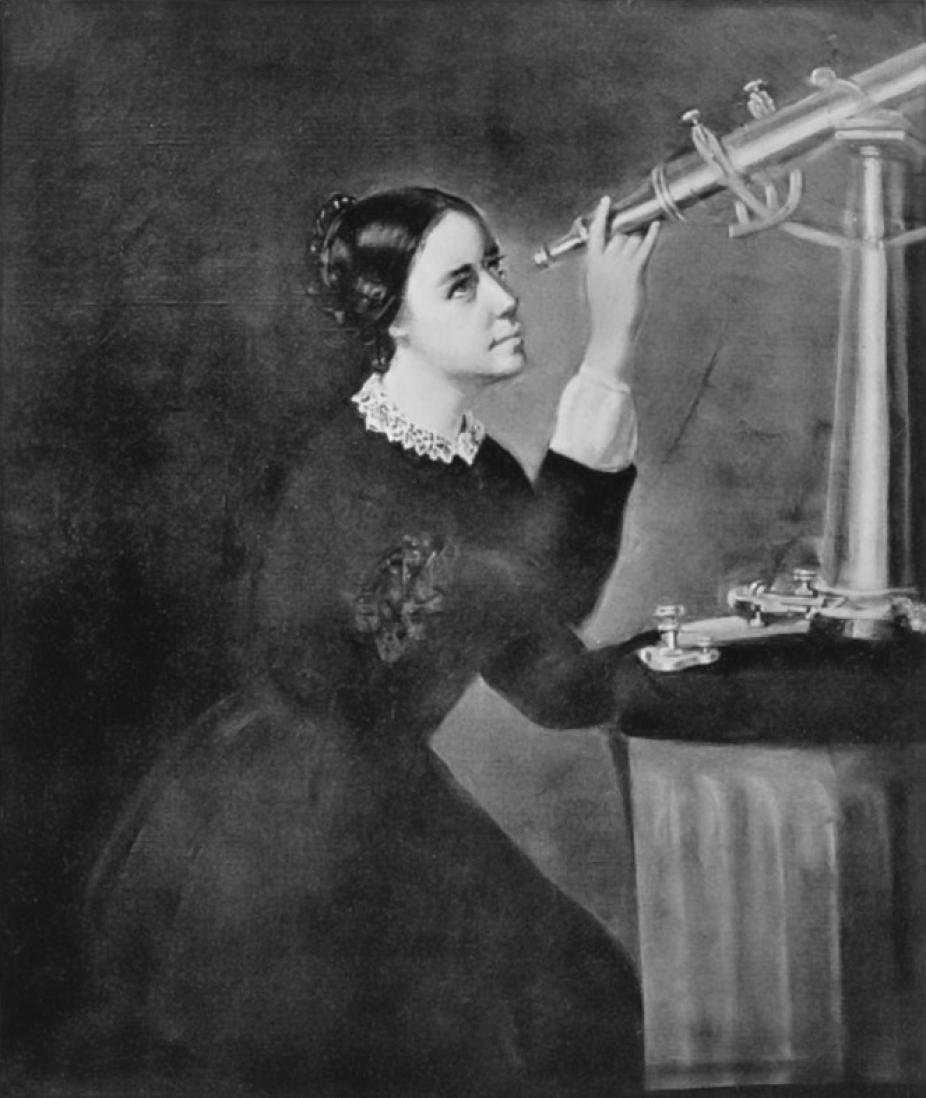Maria Mitchell (1818–1889)
Maria Mitchell was born in Nantucket, Massachusetts in 1818 and was raised in the Quaker religion by parents that highly valued education. Her mother was a librarian and offered Mitchell and her nine siblings access to educational resources. Her father was a schoolteacher and amateur astronomer; he believed in educating boys and girls equally. Mitchell had a propensity for astronomy and advanced mathematics and, encouraged by her father, she learned to operate various astronomical instruments including chronometers, sextants, simple refracting telescopes, and Dolland telescopes.

Maria Mitchell
When Mitchell was 11 years old, her father founded his own school where she became a student and a teaching assistant. At age 12, she helped her father calculate the exact moment of a 1831 solar eclipse. Following the closure of her father's school, she attended Unitarian minister Cyrus Peirce's School for Young Ladies until she turned 16. In 1835 Mitchell opened her own school where she developed experimental teaching methods and made the controversial choice to allow nonwhite children to attend.
In 1836 Mitchell accepted the position of first librarian of the Nantucket Atheneum where she remained for 20 years. Her part-time position allowed her to continue collaborating with her father doing astronomical observations and geographical calculations for the U.S. Coast Survey. Their small observatory sat atop the local Pacific Bank building and housed a four-inch equatorial telescope. Wikipedia explains: "In addition to looking for nebulae and double stars, the pair produced latitudes and longitudes by calculating the altitudes of stars and the culminations and occultations of the moon, respectively."
Mitchell received a gold medal prize from King Christian VIII of Denmark for discovering a comet she observed at 10:50 pm on October 1, 1847. This comet was aptly named "Miss Mitchell's Comet" (modern designation C/1847 T1). According to Wikipedia, she became the first American to receive this medal and the first woman to receive an award in astronomy.
In 1865, the founder of Vassar College appointed Mitchell to be the first female professor of astronomy. In addition, she became the director of the Vassar College Observatory and remained in that position for 20 years.
Mitchell was also involved in social issues, particularly those pertaining to the anti-slavery and women's suffrage movements.
Bibliography
Wikipedia, Maria Mitchell